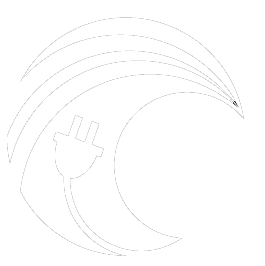In 2020, the U.S. Department of Energy (DOE) Office of Energy Efficiency & Renewable Energy (EERE) and the Water Power Technologies Office (WPTO) issued the first call for ORISE WPTO-MHK Graduate Student Research Program. The ORISE fellowship partners high performing graduate students with national labs and private industry to focus on early-stage research and development (R&D). Ultimately their goal is to strengthen the body of scientific and engineering knowledge and develop new technologies that increase U.S. marine and hydrokinetic (MHK) energy generation.
We are delighted that four PMEC students were chosen from this year’s competitive solicitation to work with PMEC partners (Oscilla Power, the National Renewable Energy Laboratory, and Pacific Northwest National Laboratory) on a variety of wave energy focused R&D efforts.
Hannah Mankle (OSU & Oscilla Power Inc):
Wave energy research to date has focused on developing wave energy converters (WECs) to be incorporated into the larger power grid, but the challenge with implementing these technologies is the high cost. This provides an opportunity to explore the design optimization of small-scale WECs, which have applications in emerging markets and the larger Blue Economy. WEC geometry optimization has been recently explored and for grid-scale applications, but it isn’t currently clear how design variables, objective functions, and embedded modeling must change in order to optimally design smaller scale WECs.
Brittany Lydon (UW & NREL):
Oscillating Surge Wave Energy Converter (OSWEC) numerical modeling is complicated by the nonlinear flow field around the flap, scaling viscous losses, and flap behavior in realistic sea states – all of which are yet to be well understood and characterized. We are proposing a collaboration with the National Renewable Energy Laboratory (NREL) to develop accurate, high-fidelity numerical models, using Smoothed Particle Hydrodynamics (SPH), of an OSWEC using their High Performance Computing (HPC) resources. The objectives of this collaboration are to use these models, coupled with experiments, to gain insight on the flow dynamics surrounding the flap, specifically how these nonlinearities vary with WEC scale and its behavior in real, nonlinear ocean conditions.
Chris Dizon (OSU & PNNL):
Powering the Blue Economy, DOE's WPTO initiative, aims to give select maritime applications the advantage of improved and dependable operation by coupling them with marine renewable energy. The development of a "bolt-on" horizontal-pendulum based wave energy converter offers the ability to provide ease-of-use in installation, maintenance, and performance for multiple applications given a both universal and modular design. This decreases the cost and time in developing a power source for an individual market, while increasing the confidence and feasibility of such new technology
Austin Berrier (OSU & NREL):
Structurally flexible wave energy converters are a design archetype that use distributed power take off systems built directly into their structure. Incoming waves make these systems resonate and bend elastically, and specially selected materials are used to convert this bending into electrical energy. Research to date on optimal flexible devices have limited their focus to geometric properties, and Austin's work seeks to expand on them by using nature-inspired optimization algorithms to simultaneously explore material and mooring properties. The initial work for this project is for a fully-submerged flexible tube design, and will additionally explore how optimal tube designs potentially change when introducing model nonlinearities.
Congratulations to Hannah Mankle, Brittany Lydon, Chris Dizon and Austin Berrier!

